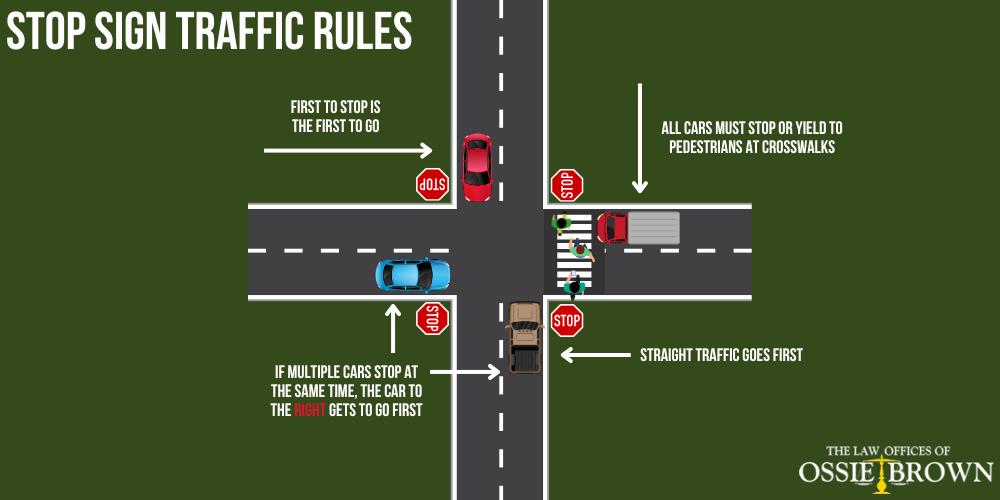
Stop signs are ubiquitous on our roads, serving as crucial traffic control devices. They dictate the flow of vehicles and pedestrians, ensuring safety at intersections. But have you ever wondered if it’s legal to simply put up your own stop sign whenever you feel like it? The answer, unsurprisingly, is no. While stop signs seem simple enough, their placement and usage are governed by a complex web of traffic laws and regulations.
This article will delve into the intricacies of stop sign legality, exploring the reasons behind these rules and outlining the potential consequences of unauthorized signage. We’ll examine the roles of traffic laws, local ordinances, and authorized entities in determining when and where stop signs can be legally installed. By understanding these guidelines, you can ensure your actions comply with the law and contribute to a safer driving environment for everyone.
Traffic Laws and Stop Signs
Traffic laws are designed to regulate the movement of vehicles and pedestrians, promoting safety and order on our roads. These laws are established at both the state and federal levels, providing a framework for traffic control across the country. Stop signs fall under these regulations, specifically those governing traffic signals and signage.
The Manual on Uniform Traffic Control Devices (MUTCD) is a comprehensive guide published by the Federal Highway Administration (FHWA). It outlines standardized practices for traffic control devices, including stop signs, ensuring consistency and uniformity across jurisdictions. The MUTCD dictates the specific design, placement, and usage of stop signs, taking into account factors like road type, traffic volume, and visibility.
Illegal Placement of Stop Signs

Unauthorized placement of stop signs is illegal because it disrupts the established traffic flow and can create dangerous situations. Imagine a driver approaching an intersection with an unexpected stop sign – they might be caught off guard, leading to accidents or confusion. Furthermore, unauthorized signs can mislead drivers, causing them to make incorrect decisions based on inaccurate information.
The legality of placing a stop sign hinges on several factors, including the location, purpose, and authorization. Simply erecting a homemade stop sign in your front yard or on a private road is illegal, regardless of your intentions. These actions violate traffic laws and can result in fines or other penalties.
Authorized Entities for Signage
Only authorized entities have the legal authority to install and maintain stop signs. These typically include:
- Municipalities: Cities, towns, and counties are responsible for managing traffic control within their jurisdictions. They have the power to determine the need for stop signs based on local traffic patterns and safety concerns.
- State Departments of Transportation (DOTs): State DOTs oversee major highways and state roads. They work with municipalities to ensure consistent traffic control practices across the state.
Local Ordinances and Regulations

In addition to state traffic laws, local ordinances often provide specific regulations regarding signage installation and usage. These ordinances may address issues such as:
- Permit Requirements: Many municipalities require permits for installing any type of traffic control device, including stop signs. This ensures that signage is properly planned and installed according to safety standards.
- Sign Specifications: Local ordinances may specify the size, color, and material requirements for stop signs, ensuring consistency and visibility.
- Prohibited Signage: Some ordinances may prohibit certain types of signage, such as homemade or unauthorized signs, to maintain order and prevent confusion.
Consequences of Unauthorized Signage
The consequences of placing an unauthorized stop sign can be serious. Violations typically result in fines, but more severe penalties may apply depending on the circumstances.
- Fines: Municipalities often impose hefty fines for illegal signage violations, ranging from hundreds to thousands of dollars.
- Legal Action: In some cases, individuals who place unauthorized stop signs could face legal action from property owners or drivers who are harmed as a result.
- Safety Hazards: The most significant consequence of unauthorized signage is the potential for accidents and injuries. Misleading drivers can lead to collisions, putting lives at risk.
Conclusion
While stop signs seem like simple traffic control devices, their placement and usage are governed by complex laws and regulations. Unauthorized installation of is it illegal to have a stop sign can disrupt traffic flow, mislead drivers, and create dangerous situations. It is crucial to understand the legal framework surrounding signage and consult with local authorities before installing any type of traffic control device. By adhering to these guidelines, we can contribute to a safer and more efficient transportation system for everyone.
